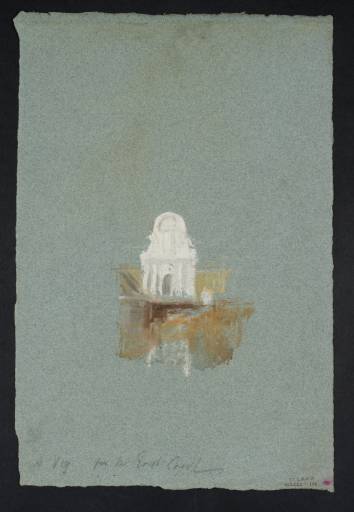1826
A.J. Finberg, A Complete Inventory of the Drawings of the Turner Bequest, London 1909, vol.II, p.897, CCLXXX 110, as ‘A monument. Body colour on blue. Written on margin by Turner (?) – “4 vig. for the East Coast.” (This was a projected continuation of the “Southern Coast” series of engravings)’, c.1826–36.
1981
Eric Shanes, Turner’s Rivers, Harbours and Coasts, London 1981, p.153.
1993
Dr Jan Piggott, Turner’s Vignettes, exhibition catalogue, Tate Gallery, London 1993, p.96, as ‘Inscr. by Turner “4 Vig for the East Coast”. Church on a quay’.
1991
Ian Warrell, Turner: The Fourth Decade: Watercolours 1820–1830, exhibition catalogue, Tate Gallery, London 1991, p.57 under no.59.

